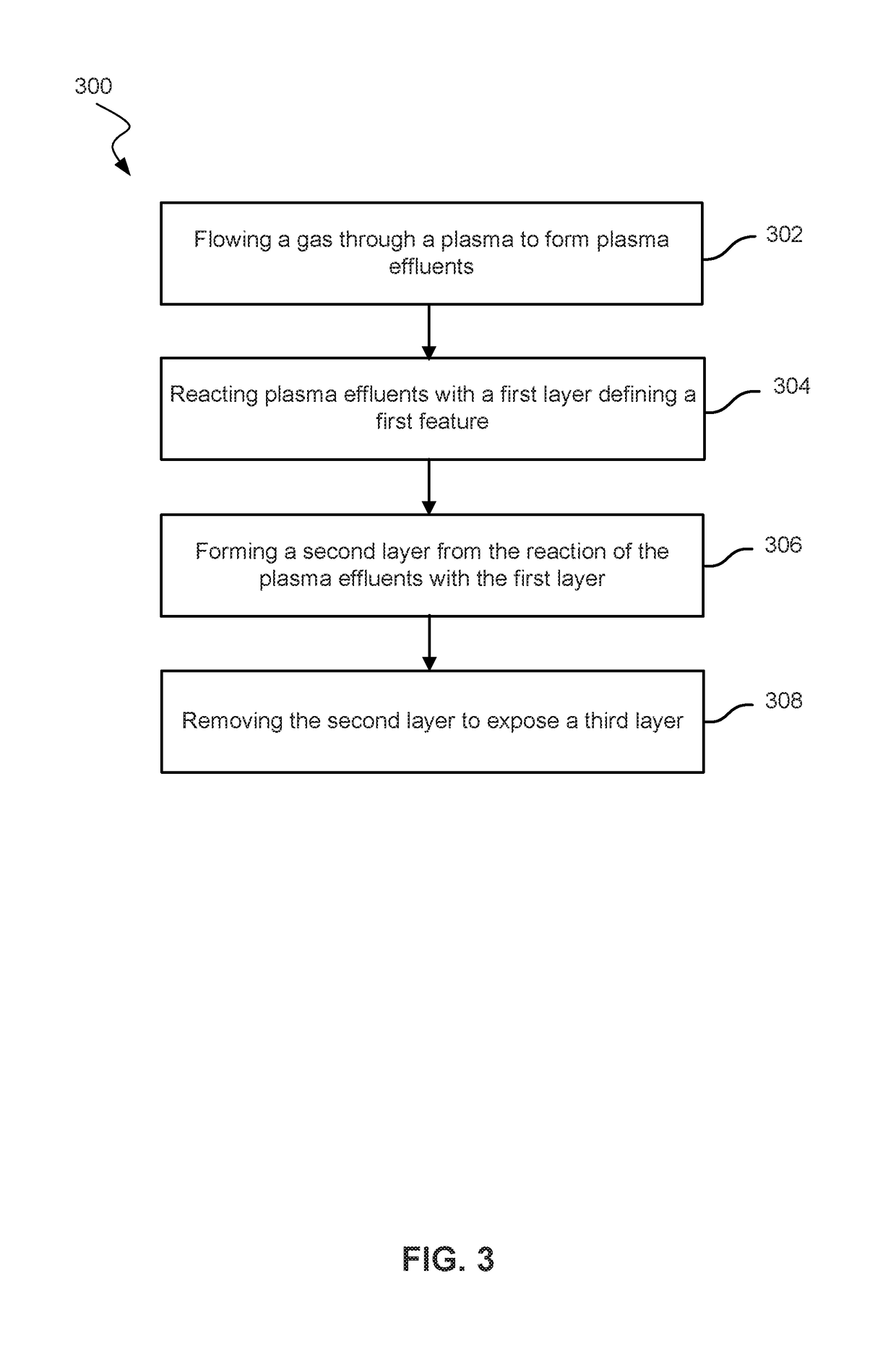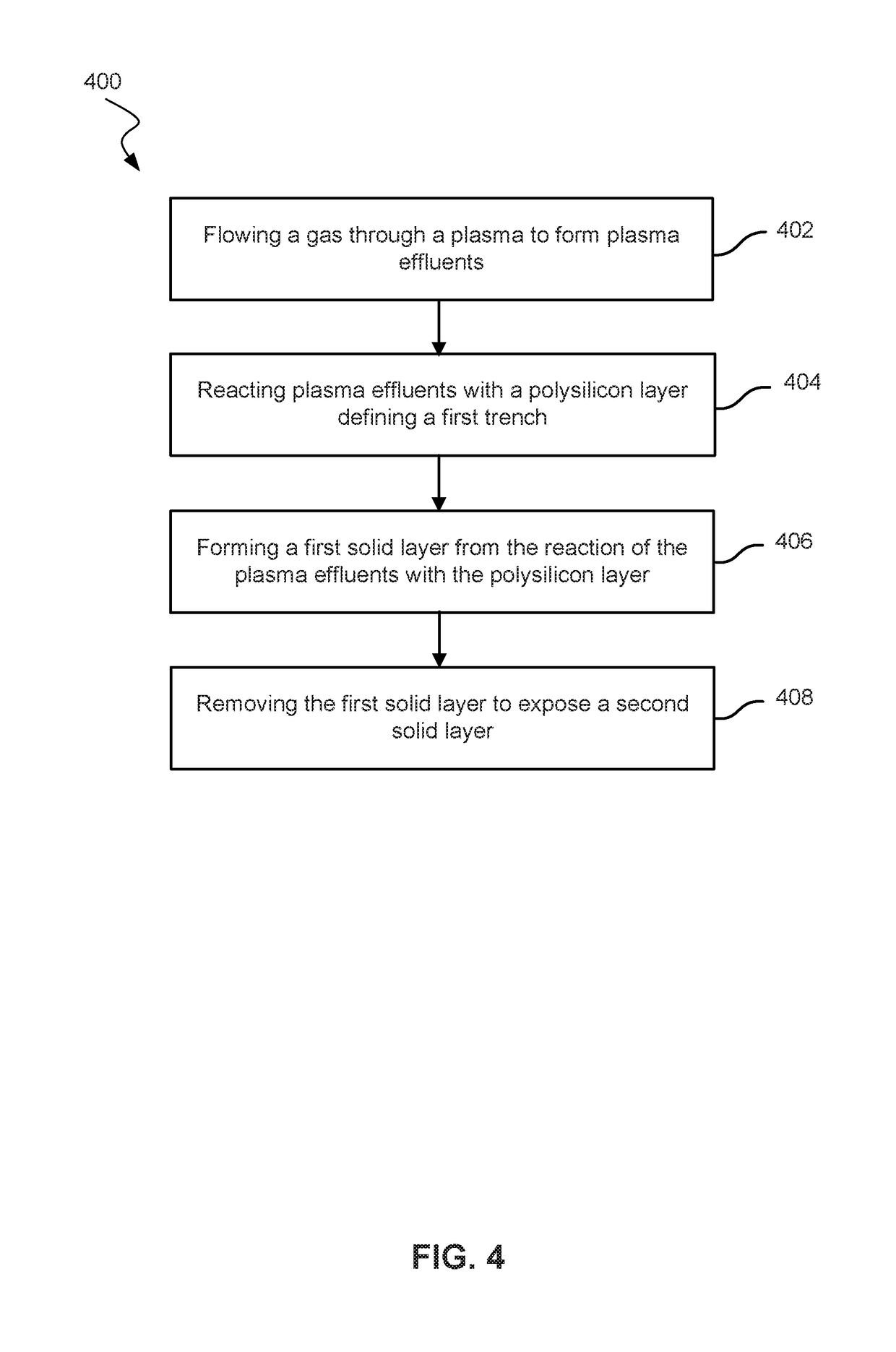Methods for anisotropic control of selective silicon removal
a selective silicon and anisotropic control technology, applied in the field of semiconductor processing, can solve the problems of unplanned etching of the second material, and achieve the effects of reducing the possibility of overhang, reducing unwanted etching, and improving the performance and reliability of the semiconductor devi
- Summary
- Abstract
- Description
- Claims
- Application Information
AI Technical Summary
Benefits of technology
Problems solved by technology
Method used
Image
Examples
Embodiment Construction
[0017]As characteristic dimensions decrease, the negative effects of process defects on performance and reliability increases. For example, FIG. 1 shows that a conventional process may result in a leakage path. Substrate 102 has electrically active areas 104 and 106. Substrate 102 may be a silicon wafer, and electrically active areas 104 and 106 may include silicon germanium and / or silicon phosphorous. A trench is defined by a polysilicon cap 108 on a high-k dielectric layer 110. The high-k dielectric layer may be adjacent to a spacer 112, which may be adjacent to layer 114. A processing defect may be present in the bottom of the trench, which may cause an undesired deposit 116 of polysilicon. In a conventional etch of polysilicon, polysilicon cap 108 may be etched away. However, undesired deposit 116 may also be etched, which may lead to parts of electrically active area 106 being etched away, resulting in void 118. Void 118 may cause poor device performance including shorting or n...
PUM
 Login to View More
Login to View More Abstract
Description
Claims
Application Information
 Login to View More
Login to View More - R&D Engineer
- R&D Manager
- IP Professional
- Industry Leading Data Capabilities
- Powerful AI technology
- Patent DNA Extraction
Browse by: Latest US Patents, China's latest patents, Technical Efficacy Thesaurus, Application Domain, Technology Topic, Popular Technical Reports.
© 2024 PatSnap. All rights reserved.Legal|Privacy policy|Modern Slavery Act Transparency Statement|Sitemap|About US| Contact US: help@patsnap.com










